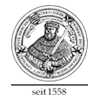 |
 |
 |
 |
 |
||
| CARBON-3D - Mission Description |
|
DESCRIPTION OF THE MISSION CARBON-3D is designed to ensure the overall science driven goal: global acquisition of a combined, synergistic BRDF-LIDAR-dataset to continuously map height profiles and reflectance to retrieve biomass. Required ground data will be obtained from terrestrial monitoring sites linked to worldwide observation networks and associated regional projects. The scientific project leader is coordinating ESA’s Landcover Implementation Office starting in 2004 and will be able to establish close links to global landcover validation activities and the CEOS landcover validation team. If CARBON-3D will be selected for the phase A and B study in 2004 and 2005 the system will be launched in 2009. The CARBON-3D BRDF Sensor The BRDF imager is a multispectral pushbroom imager that is sampling the Bi-directional Reflectance Distribution Function of the target scenery (Table 1). The mission design lifetime will be two years with an orbit of 390-410 km (with monthly reboost to 410 km using monopropellant hydrazine).
Table 1. BRDF instrument characteristics The spatial resolution at nadir will be < 25 m to match the VCL resolution, allowing for approximately 50 m spatial resolution at the extreme off-nadir angles for BRDF angular acquisitions. The BRDF Imager will consist of two identical Three-Mirror-Anastigmat (TMA) imaging sub-systems, a nadir imager and an off-nadir imager. The Carbon-3D VCL Sensor The Vegetation Canopy LIDAR (VCL) instrument consists of 3 near-infrared laser beams (Table 2). The instrument is designed to operate at an orbital altitude of 400 km ? 10%. That does require orbital maintenance every few weeks, but higher orbits have a significant impact on the quality of the received laser signal. Laser altimetry is the only space-based remote sensing technique capable of measuring tree heights in closed canopies. Waveform analyses based on extensive airborne and spaceborne Laser altimetry have revealed the need for footprint sizes of about one to two canopy diameters. This guarantees a resulting reflection from the vertical top of canopies within the sampled area, as well as sufficient intra- and inter-tree gaps required to image the underlying ground.
Table 2. VCL instrument characteristics Sufficient laser output energy and dynamic range in the receiver are required to detect small (~ 1%) returns from the canopy top and, even in dense canopies, the underlying ground. Smaller footprints underestimate true canopy height (reduced probability of sampling the top of the canopy). Conversely, with larger footprints, similar to those of the ICESat mission (Ice, Cloud and land Elevation Satellite) with the Geoscience Laser Altimeter System (GLAS) (Zwally et al. 2002), the fraction of the total return contributed by the canopy top is greatly reduced, making height measurements inaccurate, especially in mature forests with great height variability (ICESat‘s primary scientific objective is to measure changes in elevation of the Greenland and Antarctic ice sheets as part of NASA’s Earth Observing System of satellites). |
||||||||||||||||||||||||||||||||||||||||||||||||||
[Home] [Theoretical Background] [Biomass Determination] [Mission Description] [Strategic Positioning] [The Carbon-3D Team] [References] Copyright © by FSU Jena 2004, Design by R. Fahlberg
|
||